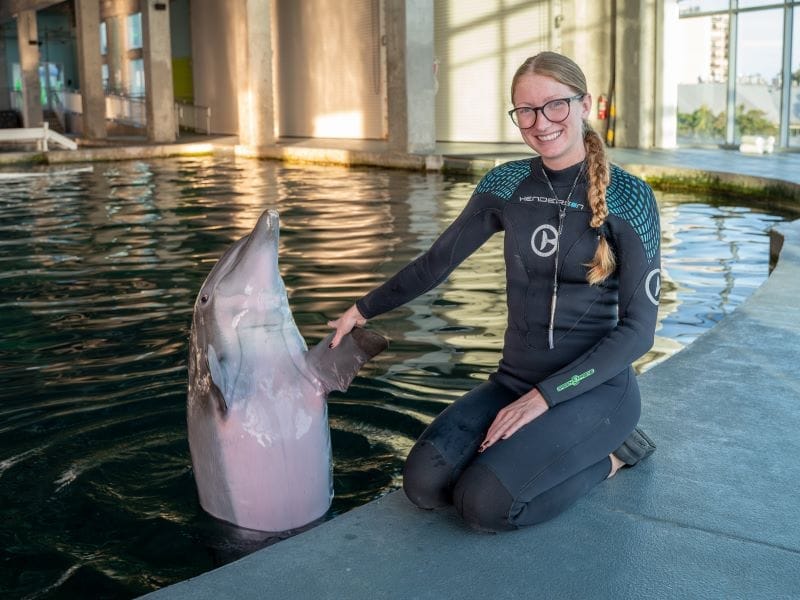Finding Light After Dark at Clearwater Marine Aquarium: Resilience After the Hurricanes
Three weeks ago, storm surge from Hurricane Helene inundated Clearwater Marine Aquarium with four feet of water. On Oct.18, the aquarium once again welcomed guests with a soft opening of Aqua Lanterns, shining bright with hope.
Aqua Lanterns: A Chinese Festival of Lights had long been on schedule, but the team at CMA never imagined that this “light after dark” experience would come to symbolize resiliency in Tampa Bay as the community begins the journey toward recovery after two unprecedented back-to-back storms.
To most, Clearwater Marine Aquarium is a world-famous attraction, but it’s so much more than that. It’s home of the helpers – a non-profit working animal hospital and rehabilitation center that has been a part of our community since 1972.
However, after two storms, the helpers themselves found themselves in a place where they needed help. Luckily, the community and its network of zoo and aquarium partners have delivered. But, like many of the families impacted by the storms, the road to recovery is still going to be a long one.
We heard from CMA team members Kelly Martin, vice president of zoological care, and Chloe Neighbarger, animal care specialist, who were part of the ride-out team for Hurricanes Helene and Milton. Even though they prepared in advance for the storms, nothing could have prepared them for the gut punch Hurricane Helene delivered on a night that changed so many lives in our community.
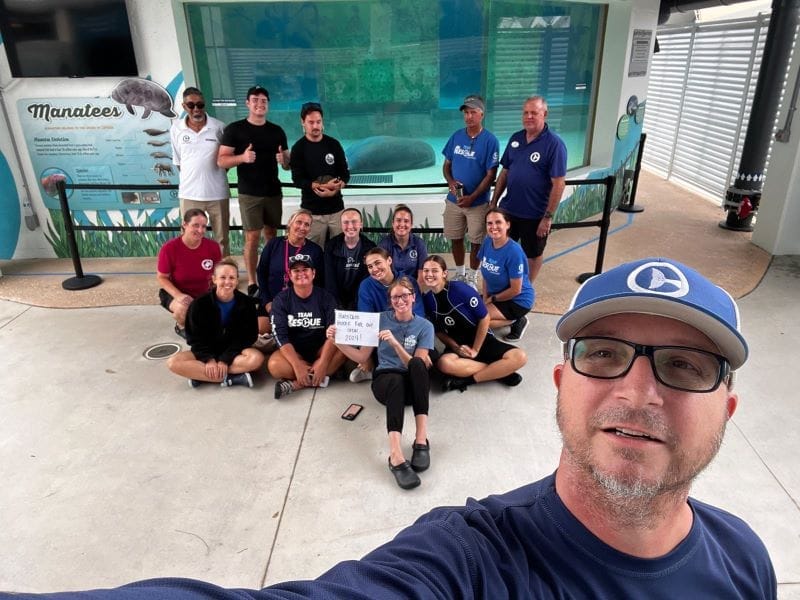
Having prepared and moved animals and equipment to higher ground, were you feeling pretty confident at the start of the night?
Kelly Martin: The ride-out team started off fairly happy and relaxed. We knew that CMA had prepared in every way for the storm.
Quickly, the mood changed when, at about 8/8:30 p.m., our fire alarm alerted us to some sort of trouble within the building. As we moved through, we noticed the storm surge started rapidly coming in through the doors and gates and upwelling through all of the drains throughout the facility – in such a short period of time! Probably within 45 minutes to an hour, we went from zero water to up to about 4 feet.
Chloe Neighbarger: It was coming in pretty fast, and it all feels like a movie, like replaying it in your head.
What was the feeling at that moment?
Chloe Neighbarger: Scary. It's definitely hard to watch the place you love just completely flood and become ruined in front of your own eyes. We were trying to act as quickly as possible as far as getting things up high. We had prepared as much as we could, but Helene just brought so much more [water] than we were expecting, so we unfortunately did lose a lot of crucial equipment.
At some point, it was no longer safe for you all to move through the building as surge waters moved in, and you had to move to higher ground.
Chloe Neighbarger: I remember we were all sitting on the fourth floor of our new building once we got to a point where we couldn't do anything anymore. And so we all kind of took a step back and just watched as literally the entire island just completely flooded.
As a community, we were all in shock at this point in the night. But, your work was far from over.
Kelly Martin: Once it was safe for the ride-out team to move throughout the building (probably about 3 a.m.), we did life checks on animals and noticed a lot of our fish systems and a lot of our pumps and filtration that were at ground level had been inundated by water, which meant we needed to act and react, not only here on the property but with teams that were off-property. We needed to make sure we were ready and prepared for events that were to come in the future.
First and foremost were our fish systems that rely on the water chemistry so that they can sustain survival. Next, we took a look at our manatees and sea turtles. They themselves were not in imminent danger, but if they were in their environments for prolonged periods of time, our life support systems, which helped keep the water clean, those life support systems had been completely devastated.
So, it was important for us to be able to coordinate events and bring teams of people over the bridge when it was safe to move these animals into an environment where they would remain healthy.
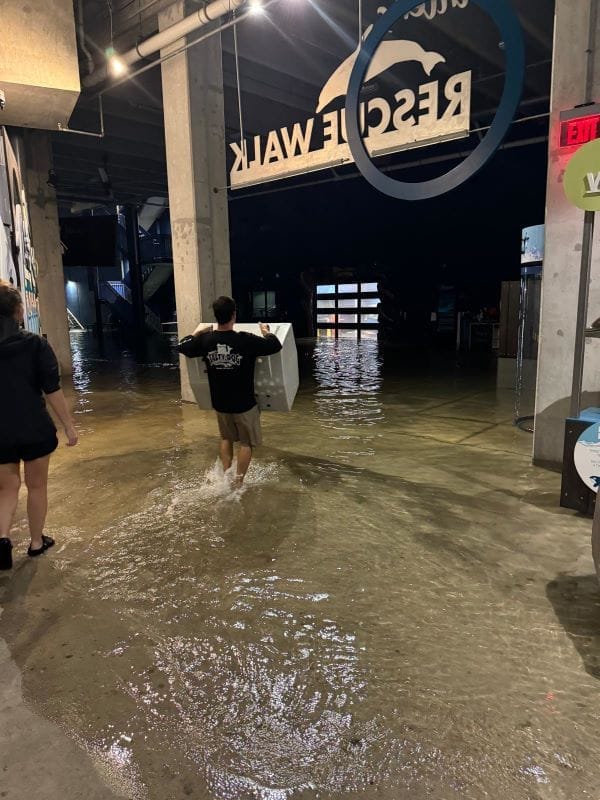
And it was still business as usual since animals still needed to be fed and cared for.
Chloe Neighbarger: I think we spent the entire day, four of us, cleaning the kitchen top to bottom, just so we could prep food for them that was at the very tippy top of the freezer that we were able to use, that was still cold enough.
Kelly Martin: It was a sobering moment, a somber attitude – a bit of a shock to those who came in, especially post-storm who hadn’t lived through it. We love this place. It is a home away from home for most of us. We are a family, and it was devasting to see the aquarium in such a state.
The resiliency kicked in. Our team is resilient and we can get through anything … really are inspired by our animal stories. If they can live through these tough events, so can we. We look forward to the future and, I think with the help of our community, we’ll get through this and we’ll come out on the other end brighter than before.
Chloe Neighbarger: I mean, one thing about tragedy is it really brings the community together, and it's just amazing to see not only the community that we've built as an aquarium but the community as an island, as Clearwater Beach, Tampa Bay as a whole. Everyone coming together to help, it’s just really great to see.

Help the Helpers:
Support Clearwater Marine Aquarium’s hurricane recovery by visiting www.cmaquarium.org/hurricane.
You can make a monetary donation or purchase items off their Hurricane Wish List. Another easy way to support CMA is simply by visiting and buying a ticket or membership.
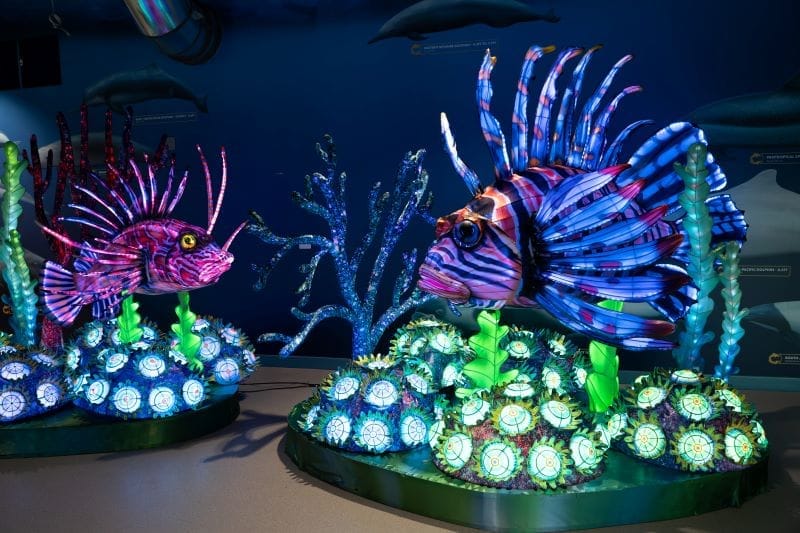
See the Light: Aqua Lanterns: A Chinese Festival of Lights
Aqua Lanterns is a magical experience, and while it’s beautiful to see during normal business hours during the day, it’s a whole different experience to see the 30 lantern displays and light tunnel at night. Tickets for the family-friendly after-hours event are $55 each, which includes after-hours admission to the aquarium’s exhibits. CMA members receive a 10% discount. Children 2 and younger are free.
Aqua Lanterns is being hosted Wednesday-Sunday evenings from 5:30-9:30 p.m. through Dec. 30. It is also open Nov. 25-27, Dec. 23 and Dec. 30.
The Community Steps in to Help CMA
ZooTampa took in manatees Yeti and Zamboni, and seven sea turtles were transported to a facility in Boca Raton.
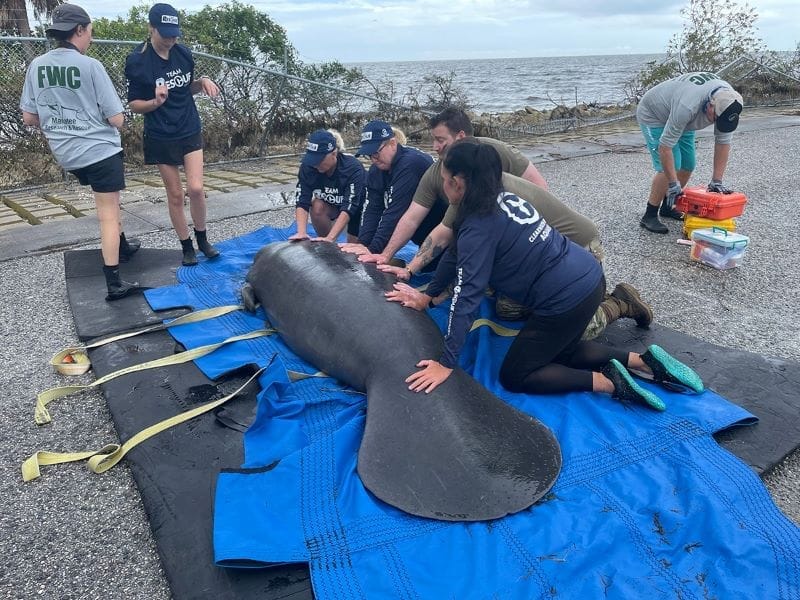
The Helpers Still Helping:
The animal rescue teams were still able to help during the three-week closure, taking part in a turtle rescue and helping relocate a manatee that was found beached near MacDill Air Force Base due to quickly receding waters after Hurricane Helene.
Originally published in the November 2024 issue of Tampa Bay Parenting Magazine.


